Introduction
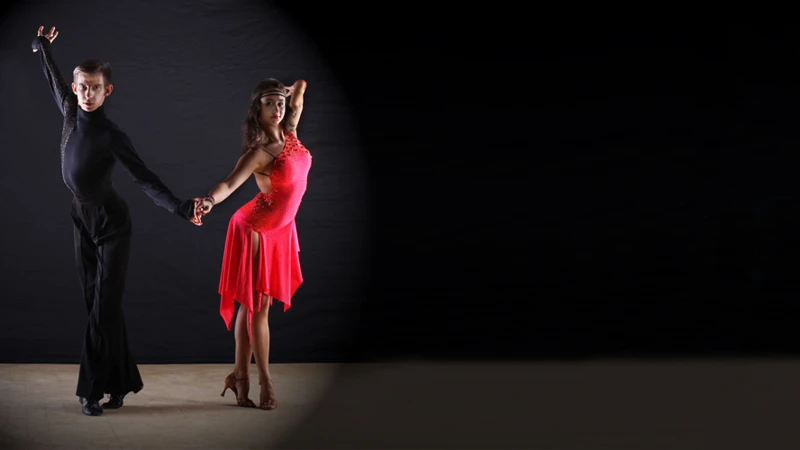
Undeniably, the world of pop culture is constantly evolving, shaped by various art forms, music, and dance. One of the most significant influences in recent years has been the rise of Latin dance. From its origins in Latin America, this captivating style has captured the attention of millions around the world, transcending language and cultural barriers to become a global phenomenon. Today, Latin dance is having a major impact on numerous aspects of modern pop culture, from music and movies to fashion and social media. Let’s delve into the fascinating role that Latin dance is playing in shaping the contemporary cultural landscape.
What is Latin Dance?
Latin dance refers to a broad range of dance styles that originated in Latin America and have since gained international popularity. The dances generally involve partners moving in synchrony to the beat of music that has a strong, driving rhythm. Salsa, Bachata, and Merengue are three of the most well-known Latin dance styles, but there are many others as well.
Each Latin dance style has its own unique characteristics that set it apart from the others. Salsa, for example, emphasizes footwork and relies heavily on intricate turns and spins, while Bachata is slower and more sensual, with an emphasis on close partner connection. Merengue is a fast-paced dance that features syncopated footwork and a playful, lively energy.
In addition to being a physical activity, Latin dance is also deeply tied to Latin American culture and history. Many of the dances originated as street dances or were developed in response to political and social movements. For example, Salsa emerged in the 1960s and 70s in New York City as a fusion of Cuban and Puerto Rican music and dance styles.
Today, Latin dance is enjoyed all over the world and has become an important part of pop culture. It is often featured in movies, TV shows, and music videos, and is a popular activity for people of all ages and backgrounds. If you’re interested in learning Latin dance, there are many resources available to help you get started, including online tutorials and in-person lessons.
Impact on Music
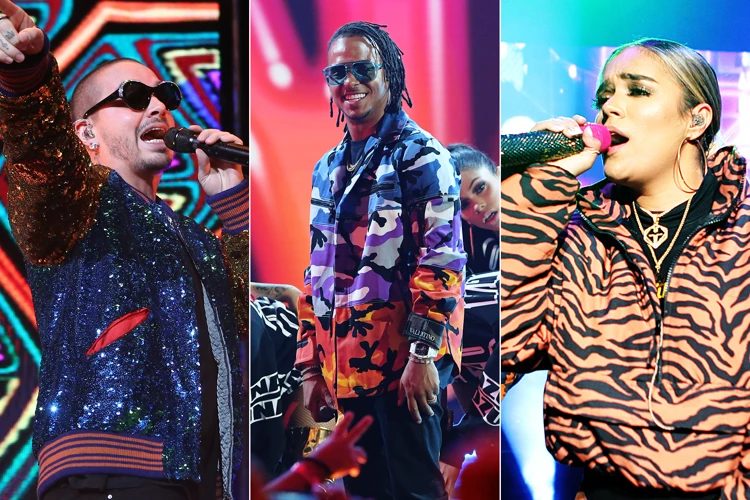
Latin dance has been a dynamic part of pop culture for many years. It has had a significant impact on various aspects of modern culture, and music is no exception. The rise of Latin music and its integration into mainstream pop culture has been a fascinating development in recent years. This has also paved the way for Latin dance to become more popular among mainstream audiences. The fusion of different Latin dance styles, such as salsa, bachata, and merengue, has helped shape and contribute to the diverse music scene of today. Let’s explore how Latin dance has influenced modern pop music scene. To understand better the background of Latin dance, visit Latin Dance Styles Around the World.
Latin Music on the Rise
Latin music has been on the rise in the past decade, gaining significant popularity in both the mainstream music industry and Latin communities worldwide. The rise of Latin music can be attributed to the fusion of various Latin genres with pop and hip-hop music, creating a unique sound that appeals to a more diverse audience. This fusion has created an evolution of Latin music, transitioning from its traditional roots to contemporary music played on radios worldwide.
Bachata, salsa, and merengue are some of the most prominent Latin musical genres that have influenced contemporary music. Bachata, for instance, originated in the Dominican Republic and is known for its romantic lyrics and guitar-based melodies. It has undergone significant changes since its inception and has evolved into a genre that has incorporated other sounds like R&B and hip-hop.
Salsa, on the other hand, is a dance-oriented genre that originated in Puerto Rico and Cuba, and has gained global recognition. It’s a fast-paced genre that features brass instruments and percussion mixed with jazz elements, which makes it a favorite genre in dance clubs around the world. Salsa dance, which derives from this genre, is a popular Latin dance that has roots in traditional Afro-Cuban music and has influenced the development of other dance styles, such as Hustle and West Coast Swing.
Merengue originated in the Dominican Republic and is characterized by its fast-paced rhythm and its use of the accordion and other brass instruments. The genre is a beautiful blend of African and indigenous sounds, which makes it an essential part of Dominican Republic’s culture.
The rise of Latin music has also led to the creation of Latin boy bands and girl groups, such as CNCO and Fifth Harmony, respectively. These groups appeal to young adults and families alike with their catchy music, upbeat rhythms, and wholesome lyrics. Their music style draws inspiration from Latin genres while incorporating elements of pop and hip-hop.
Latin music’s influence can be felt in other popular music genres like hip-hop and pop. Famous artists like Beyoncé and Justin Bieber have collaborated with Latin musicians to produce chart-topping songs that have been appreciated globally. The fusion of cultures has resulted in a beautiful blend of sounds that have taken the music industry by storm. Latin music’s penetration into mainstream culture has given rise to numerous Latin-inspired dance challenges, as well as an increase in Latin dance classes worldwide.
Latin music’s rise in recent years is a testament to its growing popularity with audiences not only in the Latin communities but around the world as well. With the fusion of different Latin musical genres into mainstream music, the future of Latin music and dance is promising for lovers of music and dance globally.
Latin Dance and Pop Music Collaborations
Latin dance has strong ties to music, and it’s no surprise that Latin music has had a significant impact on pop music as well. Pop music and Latin dance have come together to create some iconic collaborations that have redefined the genre. One of the most popular examples of this is the 1999 hit song “Livin’ La Vida Loca” by Ricky Martin, which featured a *strong* salsa beat and Latin-inspired choreography.
In recent years, there have been several collaborations between pop music and Latin dance, resulting in some of the biggest hits in pop music. For example, Luis Fonsi’s “Despacito” featuring Daddy Yankee features a mix of reggaeton and salsa with a catchy guitar riff, resulting in a dance track that became a global phenomenon.
Another popular collaboration is the song “Hips Don’t Lie” by Shakira and Wyclef Jean, which incorporates elements of Latin dance genres such as salsa and bachata. The music video for the song features the artists dancing in a salsa club, highlighting the connection between Latin dance and pop music.
Pop artists have also embraced Latin dance by featuring it in their music videos and live performances. Jennifer Lopez, a well-known advocate for Latin dance, often incorporates salsa, merengue, and other Latin dance styles in her music and performances.
The collaboration between Latin dance and pop music has resulted in some of the most iconic and memorable hits of recent years. These collaborations have helped to introduce Latin dance and music to new audiences around the world, showcasing the beauty and energy of these art forms.
Impact on Movies and TV
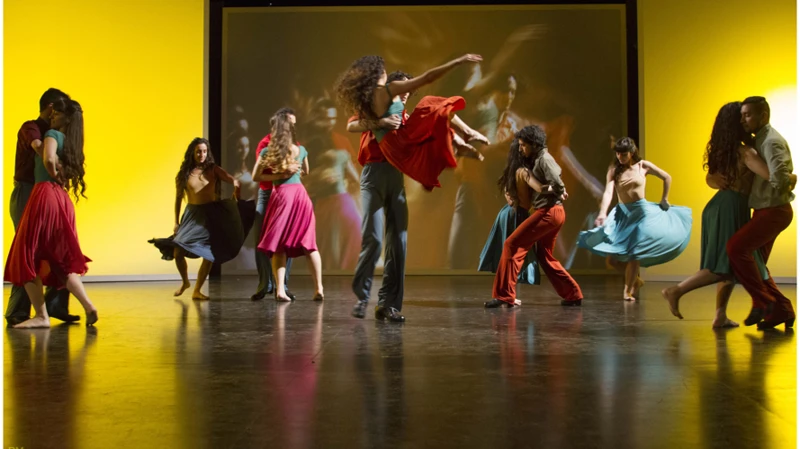
Latin dance has been making waves in pop culture, and one area where its impact is highly visible is in movies and TV. From lively dance sequences in Hollywood blockbusters to Latin dance competitions on reality TV shows, this art form is being celebrated and showcased in various ways. The use of Latin dance in entertainment is not a recent phenomenon, but it has definitely gained more prominence in recent years. The infusion of Latin dance in movies and TV not only adds an energetic and captivating element to the entertainment industry, but also highlights the cultural significance and beauty of this art form. Let us explore some examples that demonstrate the role of Latin dance in movies and TV. If you are interested in learning more about the cultural significance of Latin dance, feel free to check out this article.
Latin Dance in Films
Latin dance has made a significant impact on films in recent years. It has been featured in several movies and has worked wonders at the box office. One of the most notable representations of Latin dance in films is the “Step Up” series. “Step Up” franchise has been around since 2006 and has been a major source of inspiration for dancers around the world.
The franchise has showcased various styles of dance, including salsa, bachata, merengue, and more. These dance forms have been presented in such a way that they have become popular among people who are not familiar with Latin dance. The way the choreographers have incorporated Latin dance into the movies is remarkable, and it has helped popularize the dances on a global platform.
One of the most iconic dance scenes in a movie that featured Latin dance is from the movie “Dirty Dancing: Havana Nights”. The movie’s soundtrack comprised several Latin songs, and the lead actors were shown performing sensual and rhythmic dances, such as the salsa and the merengue. The fusion of Latin dance with contemporary music created a beautiful and enthralling experience for the audience.
Other movies, such as “Take the Lead” and “Shall We Dance?”, have also featured Latin dance as their central theme. These movies have helped introduce Latin dance to a wider audience and have also created a newfound appreciation for the dance form. As a result, Latin dance has become increasingly popular among people of different age groups and backgrounds.
In conclusion, Latin dance has had a considerable impact on the film industry, and we can expect to see more of it in the future. The way the movies have portrayed Latin dance has helped showcase its beauty and complexity, and it has inspired many people to take up the dance form. This growing interest in Latin dance has helped break the stereotypes surrounding certain dance styles and has highlighted the importance of cultural diversity in the arts. Whether it is salsa, bachata, or merengue, Latin dance has undoubtedly added a unique flavor to the world of cinema.
Read more about the history and evolution of bachata
Latin Dance in TV Shows
Latin dance has not only taken over the music industry but also influenced various TV shows around the world. From talent competitions to scripted programs, Latin dance has become a staple of modern pop culture on the small screen.
Dancing with the Stars: This popular show, where celebrities are paired with professional dancers to compete against each other, has showcased numerous Latin dance styles, including salsa, samba, cha-cha, and Argentine tango. The show has also helped popularize Latin dance and inspired many viewers to take up dancing themselves.
Crazy Ex-Girlfriend: This musical comedy-drama features several Latin dance sequences, including a seductive tango between main characters Rebecca and Nathaniel. The show’s choreographer, Kat Burns, is known for incorporating various dance styles into her routines, including Latin dance influences.
So You Think You Can Dance: This reality competition series showcases dancers from various backgrounds and styles, including Latin dance. The show has featured performances in salsa, merengue, and bachata, among others.
Modern Family: This popular sitcom has included several Latin dance-inspired scenes, including Gloria and Jay’s salsa dance routine in season 4. The show’s creators have stated that they aim to celebrate and include Latin culture in their storytelling.
These TV shows not only showcase the beauty and diversity of Latin dance but also inspire and motivate viewers to appreciate and learn the art form for themselves.
For more information on Latin dance inspiration, check out our article here. If you’re interested in learning more about specific Latin dance styles, we recommend checking out Breaking Down Salsa: Fundamentals and Techniques and Merengue: Origins, Folk, and Modern Music.
Impact on Fashion
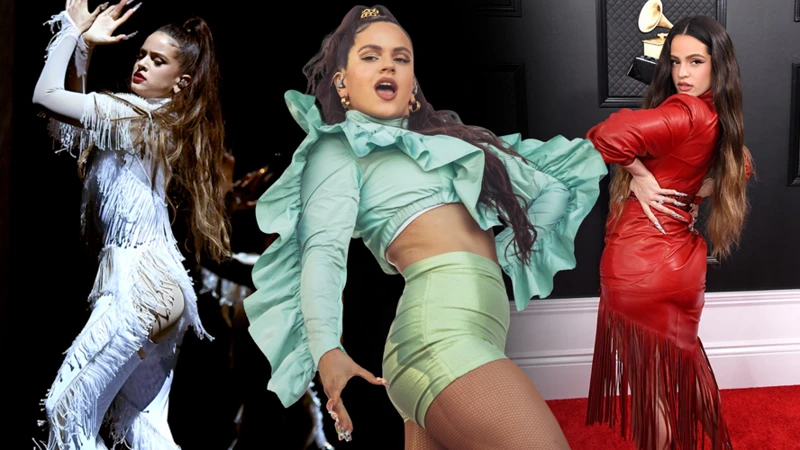
Latin dance has not only had a significant impact on the music and entertainment industries, but it has also made its mark on the fashion world. The vibrant and colorful costumes worn during Latin dance performances have inspired a variety of fashion designers and trendsetters.
Latin-Inspired Fashion Trends: Many fashion designers have drawn inspiration from Latin dance costumes, incorporating bold and bright colors, ruffles, and fringe into their designs. In 2015, designer Rebecca Minkoff showcased a collection at New York Fashion Week that featured ruffles, floral prints, and bright colors. Latin-inspired fashion has also been seen on the runways of Marc Jacobs and Dolce & Gabbana.
Dancing Shoes: The shoes worn during Latin dance performances are often made for both style and function. One of the most popular styles is the salsa or Latin dance shoe, which has a suede sole to allow for easy spins and turns. These shoes are often brightly colored, and have intricate patterns or details. Many fashion designers have created their own designs based on the classic Latin dance shoe, turning them into a fashionable accessory for everyday wear.
Celebrity Influence: Many celebrities have embraced Latin-inspired fashion, including Jennifer Lopez, who has become known for her vibrant stage costumes and iconic green Versace dress. Other celebrities who have been seen wearing Latin-inspired fashion include Beyoncé, Shakira, and Sofia Vergara. Many of these celebrities have even collaborated with fashion designers to create their own lines inspired by Latin dance and culture.
Latin dance’s influence on fashion can also be seen in other dance styles such as hip-hop and contemporary. The fusion of Latin dance with these styles has resulted in unique and colorful costumes that reflect the energy and passion of Latin dance.
It’s clear that Latin dance has made a significant impact on the fashion industry, inspiring designers and trendsetters with its bold and colorful style. Whether it’s through costumes worn during performances or everyday fashion, Latin dance will continue to influence and shape the fashion world.
Anchor: To learn more about how Latin dance influences other dance styles, check out our article on Latin Dance Influences Other Styles.
Impact on Social Media
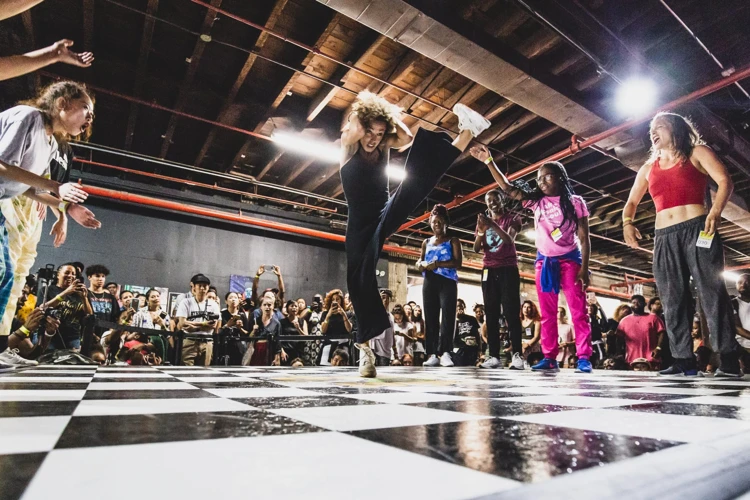
It’s no secret that social media has completely revolutionized the way we interact with one another and consume content. In recent years, Latin dance has become an increasingly prevalent force on these platforms, captivating audiences all over the world with its energetic rhythms and mesmerizing moves. From viral dance challenges that take the internet by storm to the countless tutorials and instructional videos that showcase its intricacies, Latin dance has solidified its place as a major player in the world of social media, leaving many to wonder about its continued impact on pop culture.
The Viral Power of Latin Dance Challenges
Latin dance challenges have taken social media by storm in recent years. From the Bachata Challenge to the Reggaeton Challenge, these challenges have become viral sensations, captivating people all around the world. The virality of these challenges has demonstrated the power of Latin dance in modern pop culture and has increased its exposure to wider audiences.
One of the most popular Latin dance challenges is the Bachata Challenge. Bachata is a sensual dance that originated in the Dominican Republic in the 1960s. In the challenge, two partners dance to popular Bachata songs while performing intricate turns and dips. The challenge has inspired thousands of people to learn Bachata and showcase their skills on social media platforms.
Another popular challenge is the Reggaeton Challenge. Reggaeton is a music genre that originated in Puerto Rico in the 1990s. The challenge involves dancing to the beat of popular Reggaeton songs, incorporating hip-hop and Latin dance styles. The challenge has become so popular that it has even caught the attention of major celebrities like J-Lo and Shakira.
The success of these challenges has not gone unnoticed by the music industry. Record labels and artists have harnessed the power of these challenges, using them as a way to promote their music and gain exposure to wider audiences. For example, in 2019, the hit song “Con Calma” by Daddy Yankee and Snow sparked a viral dance challenge on TikTok, which helped the song reach more than 1 billion views on the platform.
These challenges have also inspired people to take up Latin dance classes, contributing to the growing popularity of Latin dances. Some dance studios even use these challenges as a marketing tool to attract new students.
In conclusion, Latin dance challenges have become an internet sensation, showcasing the power of Latin dance in modern pop culture and increasing its exposure to a wider audience. These challenges have not only become a form of entertainment but also a marketing tool for artists and dance studios. It is safe to say that Latin dance challenges will continue to be a staple in the world of social media and popular culture.
| Latin Dance Challenges | Description |
|---|---|
| Bachata Challenge | Two partners dance to popular Bachata songs while performing intricate turns and dips. |
| Reggaeton Challenge | Dancing to the beat of popular Reggaeton songs, incorporating hip-hop and Latin dance styles. |
Influence on Dance Videos and Tutorials
The influence of Latin dance on dance videos and tutorials cannot be overstated. With its high-energy, passionate moves, Latin dance has captured the attention of viewers around the world, inspiring countless dance tutorials, how-to videos, and step-by-step guides.
Here are some ways in which Latin dance has influenced dance videos and tutorials:
- Incorporating Latin dance moves into other dance styles: Dance enthusiasts have been quick to incorporate Latin dance moves into other forms of dance, including hip-hop, modern, and jazz. The sensuality and rhythm of Latin dance has been a major source of inspiration for choreographers, who have used it to add a new dimension to their routines.
- Increasing interest in dance as a fitness routine: Thanks to the popularity of videos featuring Latin dance workouts, more people are turning to dance as a fun and effective way to stay in shape. Many dance studios and fitness centers now offer classes in various styles of Latin dance, including salsa, bachata, and merengue.
- Sharing the joy of dance with a wider audience: With the rise of social media and online video platforms, dance enthusiasts are able to share their love of Latin dance with a global audience. From instructional videos to inspiring performances, Latin dance videos have created a community of dancers who are passionate about this vibrant and dynamic art form.
As Latin dance continues to inspire and captivate audiences, we can expect to see its influence on dance videos and tutorials only continue to grow. From traditional styles to modern spins on classic moves, Latin dance will undoubtedly play a major role in the future of dance and pop culture.
Representation and Diversity
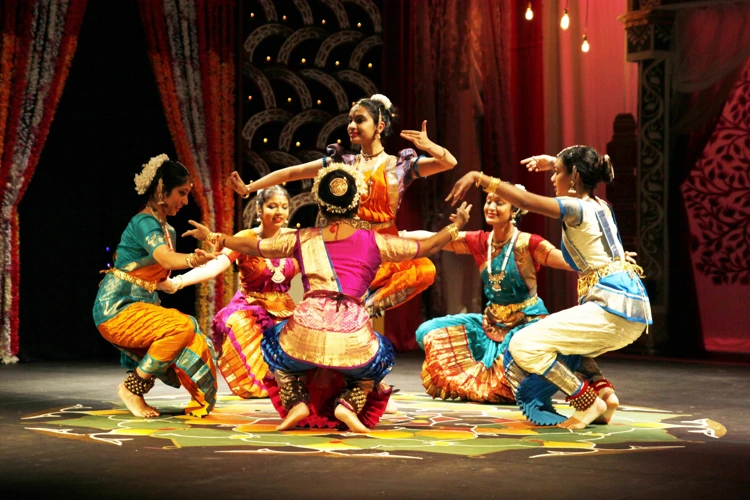
As Latin dance continues to influence modern pop culture, it also plays a crucial role in promoting representation and diversity. Along with its music and rhythm, Latin dance also reflects the rich cultural heritage of Latin America. Through its diverse range of dance styles, it breaks stereotypes and celebrates the diversity of different cultures. This section delves into the impact of Latin dance on representation and diversity, highlighting its significance in the current pop culture landscape.
Breaking Stereotypes
Latin dance has played an essential role in breaking stereotypes. It challenges the idea that Latinx people are only skilled in traditional Latin dance styles like salsa, merengue, and tango. Latin dance has evolved and merged with different cultures, creating new fusion styles that reflect the diversity and creativity of the Latinx community. These fusion styles include reggaeton, bachata, and Latin pop, which have gained mainstream popularity and have proven that Latinx artists and dancers can thrive in different genres.
Moreover, Latin dance has challenged the stereotype that only thin and fit bodies can dance or be successful in the entertainment industry. Latinx dancers of all body types and sizes have showcased their talent and have become role models for people who have felt limited by societal beauty standards.
Latin dance has also challenged the stereotype that dancing is only for women or for the LGBTQ+ community. Men have become prominent figures in the Latin dance world, breaking the gender stereotype that dancing is a feminine activity. Additionally, many LGBTQ+ people have found a welcoming community in Latin dance, where they can express themselves freely and find acceptance.
All in all, Latin dance has broken many stereotypes and has demonstrated the multifaceted nature of the Latinx community. It has opened doors for people of different backgrounds to showcase their talents, and has challenged societal norms and beauty standards.
| Stereotype | Challenge |
|---|---|
| Latinx people are only skilled in traditional dance styles | New fusion styles reflect diversity and creativity of the Latinx community |
| Thin and fit bodies are the only ones who can dance or be successful in the entertainment industry | Latinx dancers of all body types and sizes have become role models |
| Dancing is only for women or for the LGBTQ+ community | Men have become prominent figures in the Latin dance world and many LGBTQ+ people have found a welcoming community |
Celebrating Latin Heritage
Latin dance not only has an impact on modern pop culture through its music, fashion, and social media presence, but it is also a way of celebrating Latin heritage. The rich history and tradition behind these dances are an essential part of Latin culture and identity.
The Role of Latin Dance in Celebrating Latin Heritage
Latin dance is a remarkable way to celebrate the history and the cultural identity of Latin Americans. Each dance has a story to tell, and by embracing them, people can honor and appreciate the Latin American legacy. The following table showcases some famous Latin dances, highlighting their origins and significance:
| Dance | Origin | Significance |
|---|---|---|
| Salsa | Cuba | Mix of African and European cultures |
| Bachata | Dominican Republic | Popularized by guitar music |
| Tango | Argentina | Reflects the working-class culture of Buenos Aires |
| Merengue | Dominican Republic | National dance of the Dominican Republic |
These and many other Latin dances originated from different Latin American countries, reflecting their histories, cultures, music, and traditions. The celebration of Latin heritage through these dances helps to promote cultural diversity and appreciation, and it is essential for Latin Americans to preserve their traditions and identity.
The Importance of Representation in Celebrating Latin Heritage through Dance
Celebrating Latin heritage is not only about the dance itself but also about representation. Latin Americans have been historically underrepresented in various fields, including arts, media, and politics. However, the rise of Latin dance in pop culture has provided a platform for diverse representation in the entertainment industry.
Representation in Latin dance celebrates the diversity of Latin American culture and empowers Latin Americans to take pride in their heritage. It also offers an opportunity to break down the stereotypical Hollywood portrayal of Latin American culture and showcase the multifaceted aspects of Latin American dance.
Conclusion
The role of Latin dance in celebrating Latin heritage is significant as it promotes cultural diversity and provides a platform for representation. It is crucial for Latin Americans to preserve their traditions and heritage by embracing and celebrating their dances. Latin dance is not just a form of entertainment but also a way of passing down Latin American history and culture to future generations.
The Future of Latin Dance in Pop Culture
Looking ahead, Latin dance is poised to continue making waves in pop culture. With its global appeal and infectious energy, the dance style shows no signs of slowing down anytime soon.
One of the reasons for this is the increasing trend of cross-cultural collaborations in music and entertainment. Latin artists continue to work with mainstream pop stars, introducing new audiences to their distinct sound and dance moves. This not only boosts the popularity of Latin dance but also helps to break down cultural barriers and foster greater appreciation for diversity.
Additionally, as social media platforms continue to play a significant role in driving culture, we can expect to see even more influencers using Latin dance to connect with their audiences. The viral power of Latin dance challenges, in particular, has been evident across social media platforms like Instagram and TikTok. As a result, we can anticipate a continued rise in dance tutorials and online classes, helping to spread Latin dance to new corners of the world.
However, there will undoubtedly be challenges to navigate in the future. As with any cultural phenomenon, there is the risk of commercialization and a potential loss of authenticity. It is possible that Latin dance could become diluted or homogenized as it becomes increasingly popular.
To ensure that Latin dance continues to thrive, we must prioritize representation and inclusivity. We must work to break down stereotypes and celebrate the diverse range of cultures that make up the Latin dance tradition. This means not just featuring one particular Latin dance or style but embracing the full spectrum of Latin dance forms.
The future of Latin dance in pop culture is exciting, with many opportunities for growth and continued impact. As long as we remain mindful of the challenges and work to elevate the voices and traditions of diverse Latin communities, we can look forward to a future where Latin dance remains a vibrant and integral part of the cultural landscape.
Conclusion
In conclusion, the influence of Latin dance in modern pop culture cannot be ignored. From the rise of Latin music to collaborations with pop stars and its depiction in films and TV shows, Latin dance has become a significant force in shaping the entertainment industry today.
Moreover, Latin dance has also impacted the fashion industry with its vibrant colors and flirty designs. Social media has also provided a platform for Latin dance challenges to go viral and for dance tutorials to be shared worldwide.
Perhaps most importantly, Latin dance has played a crucial role in breaking stereotypes and celebrating diversity. It has become a way for Latin Americans to showcase their heritage and culture, while also inviting individuals from all backgrounds to explore and embrace Latin rhythm.
As for the future of Latin dance in pop culture, it is likely to continue thriving and evolving. With the increasing popularity of Latin music and collaborations, we can expect to see new styles of Latin dance emerge and captivate audiences worldwide.
Overall, Latin dance has earned its rightful place in modern pop culture as a vibrant and significant force that’s here to stay. It’s a celebration of culture, diversity, and art, and an invitation to join in the joy and rhythm of Latin dance.
Preguntas frecuentes
What are some popular Latin dance styles?
Some popular Latin dance styles include salsa, bachata, cha-cha, samba, rumba, and merengue.
What is the history behind Latin dance?
Latin dance has its roots in the cultural dances of Latin America, specifically in African and European influences. It has evolved and spread throughout the world, gaining popularity in the mainstream media.
What is the significance of Latin dance in pop culture?
Latin dance has become a significant part of pop culture, influencing and shaping fashion, music, movies, and social media trends.
Why is Latin music important for Latin dance culture?
Latin music is an essential component of Latin dance culture, as it provides the rhythm and beat for the dancers. The combination of the two creates a unique and exciting experience.
How has Latin dance impacted the fashion industry?
Latin dance has influenced fashion trends, incorporating bright colors, bold prints, and flowy fabrics commonly seen in Latin dance dresses and outfits.
What is the significance of Latin dance representation and diversity?
Latin dance representation and diversity showcase the various cultural backgrounds and influences that have contributed to this art form’s development. It breaks away from outdated stereotypes and promotes inclusivity and acceptance.
How has social media impacted the popularity of Latin dance?
Social media has played a significant role in the popularity of Latin dance, providing a platform for dance challenges and tutorials that reached a massive audience worldwide.
What notable movies have featured Latin dance?
Movies such as “Dirty Dancing: Havana Nights,” “Strictly Ballroom,” “Take the Lead,” and “Dance with Me” have featured Latin dance prominently.
How has Latin dance influenced other dance styles?
Latin dance has influenced various dance styles, including ballroom, hip hop, and even contemporary dance, with its emphasis on sensuality, passion, and grace.
What does the future hold for Latin dance in pop culture?
The future of Latin dance in pop culture is bright, with more collaborations and cultural representation coming to the forefront. It’s sure to continue to influence and shape the entertainment industry.

